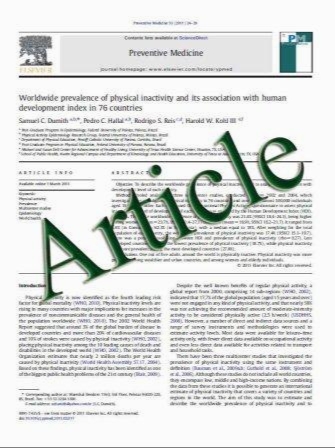Effects of low level laser therapy (808 nm) on physical strength training in humans
- نوع فایل : کتاب
- زبان : انگلیسی
- مؤلف : Cleber Ferraresi & Taysa de Brito Oliveira & Leonardo de Oliveira Zafalon & Rodrigo Bezerra de Menezes Reiff & Vilmar Baldissera & Sérgio Eduardo de
- چاپ و سال / کشور: 2011
Description
Recent studies have investigated whether low level laser therapy (LLLT) can optimize human muscle performance in physical exercise. This study tested the effect of LLLT on muscle performance in physical strength training in humans compared with strength training only. The study involved 36 men (20.8±2.2 years old), clinically healthy, with a beginner and/or moderate physical activity training pattern. The subjects were randomly distributed into three groups: TLG (training with LLLT), TG (training only) and CG (control). The training for TG and TLG subjects involved the leg-press exercise with a load equal to 80% of one repetition maximum (1RM) in the leg-press test over 12 consecutive weeks. The LLLT was applied to the quadriceps muscle of both lower limbs of the TLG subjects immediately after the end of each training session. Using an infrared laser device (808 nm) with six diodes of 60 mW each a total energy of 50.4 J of LLLT was administered over 140 s. Muscle strength was assessed using the 1RM leg-press test and the isokinetic dynamometer test. The muscle volume of the thigh of the dominant limb was assessed by thigh perimetry. The TLG subjects showed an increase of 55% in the 1RM leg-press test, which was significantly higher than the increases in the TG subjects (26%, P=0.033) and in the CG subjects (0.27%, P<0.001). The TLG was the only group to show an increase in muscle performance in the isokinetic dynamometry test compared with baseline. The increases in thigh perimeter in the TLG subjects and TG subjects were not significantly different (4.52% and 2.75%, respectively; P=0.775). Strength training associated with LLLT can increase muscle performance compared with strength training only.
Lasers Med Sci (2011) 26:349–358 DOI 10.1007/s10103-010-0855-0 Received: 3 August 2010 / Accepted: 21 October 2010 / Published online: 18 November 2010


